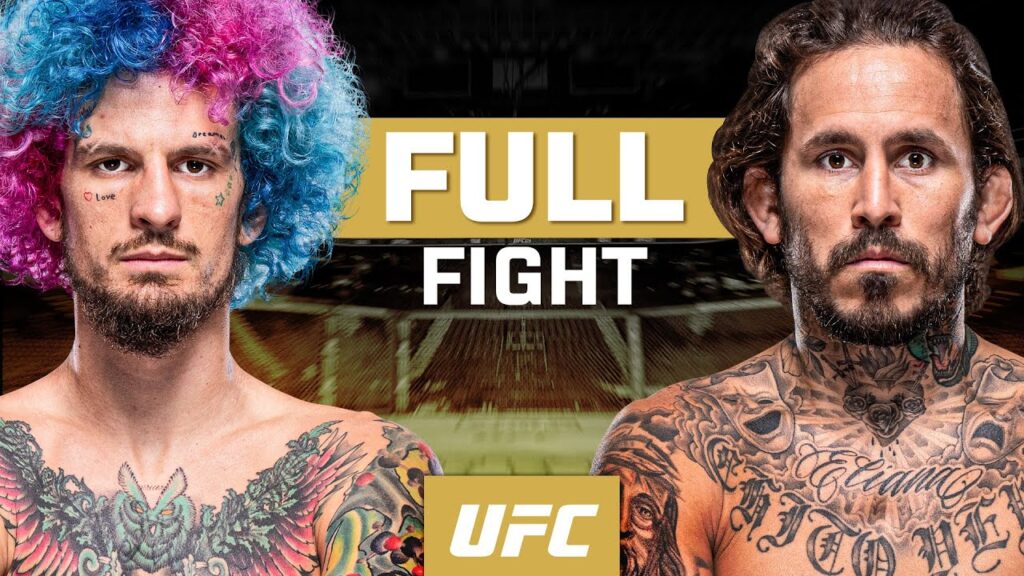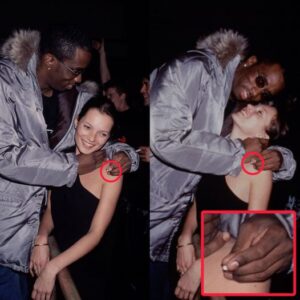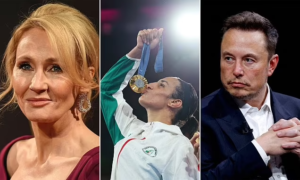Marlon “Chito” Vera vs. Sean O’Malley: A Tactical Breakdown of the UFC Bantamweight Clash
In the world of mixed martial arts, few matchups generate as much anticipation as the clash between two contrasting fighters, each with their unique skill sets and styles. The bout between Marlon “Chito” Vera and Sean O’Malley was no exception, captivating UFC fans worldwide. Vera, a seasoned veteran with over 20 UFC fights, faced the brash and flamboyant Sean O’Malley, whose speed and striking prowess have made him one of the most exciting fighters in the division. This bout was a showcase of two different fighting philosophies, where strategy, patience, and adaptability were on full display.
Round One: Feeling Out and Setting the Pace
The fight began with both fighters adopting their respective strategies. Marlon Vera, known for his patience and calculated approach, wore the yellow shorts, while O’Malley, sporting the pink and gold, looked to assert his presence early. From the outset, O’Malley appeared confident, using his quick footwork and dynamic movement to maintain distance and set up strikes. Vera, on the other hand, took his time, studying O’Malley’s rhythm and looking for openings.
O’Malley’s striking accuracy was evident early on, as he landed a high percentage of his strikes, focusing particularly on body shots. His ability to mix up his timing and maintain fluid movement kept Vera guessing. O’Malley’s spinning back kicks and jabs to the body were a clear indication of his strategy to invest in Vera’s midsection, a tactic many fighters had suggested could be effective against Vera’s durable frame.
Vera, known for his ability to adapt as the fight progresses, stayed composed, refusing to overextend himself. He attempted to gauge O’Malley’s speed and timing, a tactic that has served him well in previous fights. However, O’Malley’s constant feints and speed kept Vera on the defensive, limiting his offensive output. The champion’s ability to faint and move in and out of range without giving Vera a chance to counter was a key aspect of his game plan.
Round Two: O’Malley’s Dominance and Vera’s Resilience
As the second round began, O’Malley’s corner emphasized the importance of maintaining the pressure and not letting Vera settle into a rhythm. O’Malley continued to use his speed and diverse striking arsenal to keep Vera at bay. The body shots from O’Malley were clearly taking a toll, and his ability to switch stances added another layer of complexity to his attack. He was landing punches from unexpected angles, making it difficult for Vera to time a counter.
O’Malley’s commitment to attacking the body was evident throughout the round. He landed multiple clean shots, forcing Vera to constantly adjust his guard. Despite the barrage, Vera’s defense remained solid, and he managed to absorb some of O’Malley’s best shots without significant damage. However, it was clear that O’Malley’s speed was a significant advantage, as Vera struggled to keep up.
Vera tried to find his footing, landing a few low kicks and body shots of his own. Still, he was unable to mount a sustained offense. The combination of O’Malley’s speed and ability to mix up his strikes made it difficult for Vera to find a rhythm. When Vera did attempt to press forward, O’Malley’s footwork allowed him to evade and counter effectively.
Adjustments and Strategic Battles
Vera’s corner urged him to increase his activity, knowing that he couldn’t afford to fall too far behind on the scorecards. The advice was sound, as O’Malley’s early lead meant Vera needed to change the momentum of the fight. However, Vera’s cautious approach seemed to backfire, as he remained hesitant to engage fully, respecting O’Malley’s countering ability and power.
O’Malley continued to exploit this hesitancy, using feints and quick jabs to keep Vera off balance. His ability to mix up his strikes, going from body to head and using leg kicks to disrupt Vera’s base, was impressive. The speed and fluidity of his movement were a stark contrast to Vera’s more methodical style. O’Malley’s ability to keep Vera guessing was a masterclass in striking, demonstrating why he is considered one of the most dangerous strikers in the bantamweight division.
Vera’s Struggles and O’Malley’s Brilliance
As the fight progressed, it became clear that Vera was struggling to impose his game plan. O’Malley’s speed and movement were proving too much for Vera to handle. Every time Vera tried to push forward or set up an attack, O’Malley would either move out of range or counter with a quick combination. The champion’s ability to stay light on his feet and constantly change angles made it difficult for Vera to find any openings.
Vera managed to land a few solid shots, including a couple of hard low kicks that briefly slowed O’Malley down. However, these moments were few and far between. O’Malley’s control of the fight was evident as he continued to dictate the pace and range. His jab was sharp, his body shots were relentless, and his defensive movement was on point. Even when Vera managed to close the distance, O’Malley would quickly circle out and reset, refusing to let Vera gain any momentum.
The Final Moments and Conclusion
In the later stages of the fight, O’Malley’s confidence grew, and he began to open up more, throwing a wider variety of strikes, including a big knee up the middle that caught Vera flush. Despite the impact, Vera’s durability was on full display, as he absorbed the strike and continued to press forward. However, the accumulation of strikes was taking its toll, and Vera’s right eye began to swell noticeably.
The final moments of the fight saw O’Malley continuing to outmaneuver Vera, landing clean shots and evading counters. Vera’s face showed signs of damage, while O’Malley looked relatively fresh. The champion’s ability to stick to his game plan, use his speed, and execute his strategy to perfection was a testament to his preparation and skill.
Conclusion: A Fight of Contrasting Styles
In the end, the fight between Marlon “Chito” Vera and Sean O’Malley was a showcase of two contrasting styles. O’Malley’s speed, movement, and diverse striking arsenal proved too much for Vera’s more methodical and patient approach. While Vera showed incredible durability and heart, he struggled to deal with O’Malley’s speed and range.
O’Malley’s performance was a reminder of why he is considered one of the most dynamic strikers in the UFC. His ability to control the pace, dictate the range, and mix up his attacks made him a formidable opponent. For Vera, it was a learning experience, and he will likely go back to the drawing board to figure out how to better deal with fighters who possess O’Malley’s unique blend of speed and striking skills.
This fight was a great example of the tactical and strategic depth that MMA offers. Both fighters had their moments, but it was O’Malley’s ability to stick to his game plan and execute it with precision that ultimately made the difference. As both fighters continue their careers, this bout will serve as a valuable experience for Vera and a strong affirmation of O’Malley’s potential as a future champion in the bantamweight division.
































